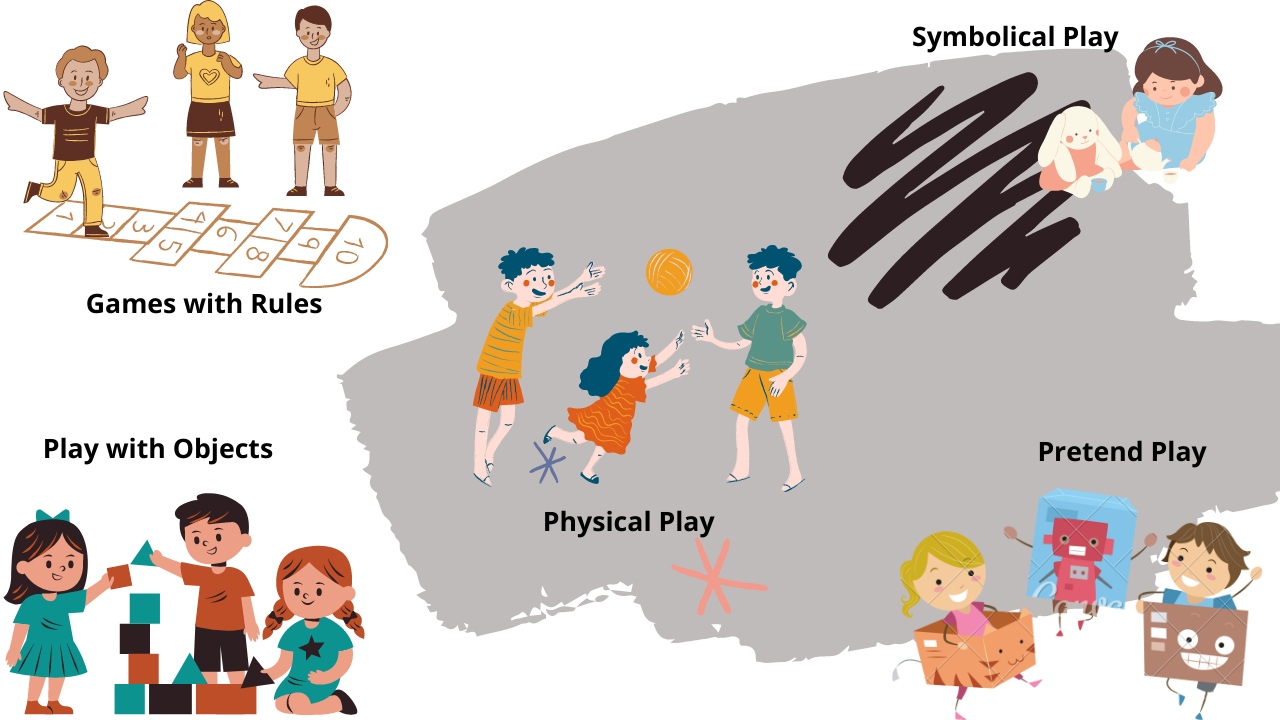When was the last time you played? For some, play could be an integral part of everyday life while for some in school or college. One could get into one of category. Maybe the question should be: do you like to play? Maybe, yes! But another question might be, why now? As a grown up adult, is it necessary? Play does not necessarily require a ground per se. Not necessarily a formal setup, a setup that children and parents value to play. Informal setup will help to overcome stigma attached to age & performance. Even if one loses it would be a happier outcome and a great opportunity for families to bond. According to the Lego Foundation research report* it suggests five types of play that are helpful for child’s learning & development. These types could be distinguished for each play, however, play types could be combined for some plays. For example, I remember a physical play plus pretend play that involved jumping with one leg (like hopping) and catching people who were within a circle. This involved hoppers thinking of Dinosaurs and others as prey.
The five kind of plays are -
- Physical Play
- Pretend Play
- Play with Objects
- Symbolic Play
- Games with Rules
Let us try to understand each of them briefly.
Physical Play
Do you remember PT (Physical Training) classes? Also known as games period in some schools. Must be one of the most awaited classes as it allowed one to pick a game of their choice. Activities could be skipping, ball play, climbing etc. Games like tug-of-war needed energy that represents greater than the sum of its parts. These activities are related to discipline, socialisation and positive impact on learning and physical/ mental development.
Pretend Play
These are self-made games often played by grandparents with grandchildren, though not restricted. These have role-play often taken from a reference from past experiences. These help in building social skills and creativity.
Play with Objects
Activities with puppet helps in storytelling. Toddlers often would pick any objects and create a play. Play could involve sorting, making a structure with objects. Activities like painting, play with sand etc aids in problem-solving, creativity, gross & fine motor skills.
Symbolic Play
Have you come across a mat becoming a tent? In child’s play objects are represented symbolically. Very close to pretend play however a wafer thin difference is objects become symbolic in nature. In the innovation world this could relate to jugaad or being resourceful.
Games with Rules
Do you recall hide-and-seek? Many could relate to it. Building a robot or coding also fall into this category. Skills like computational, problem-solving are developed.
What kind of play QtPi adopts?
At QtPi children 6+ are given free forms of play to build a structure with building blocks. While coding its ‘Games with Rules’ as it demands logic. Once the structure is built, coding is done, required sensors or electronic components are added then there is an opportunity of ‘Pretend Play’.
*https://www.legofoundation.com/media/1065/play-types-_-development-review_web.pdf
This write up is based on personal learning from the course Coping with Changes: Social-Emotional Learning Through Play from futurelearn.com
